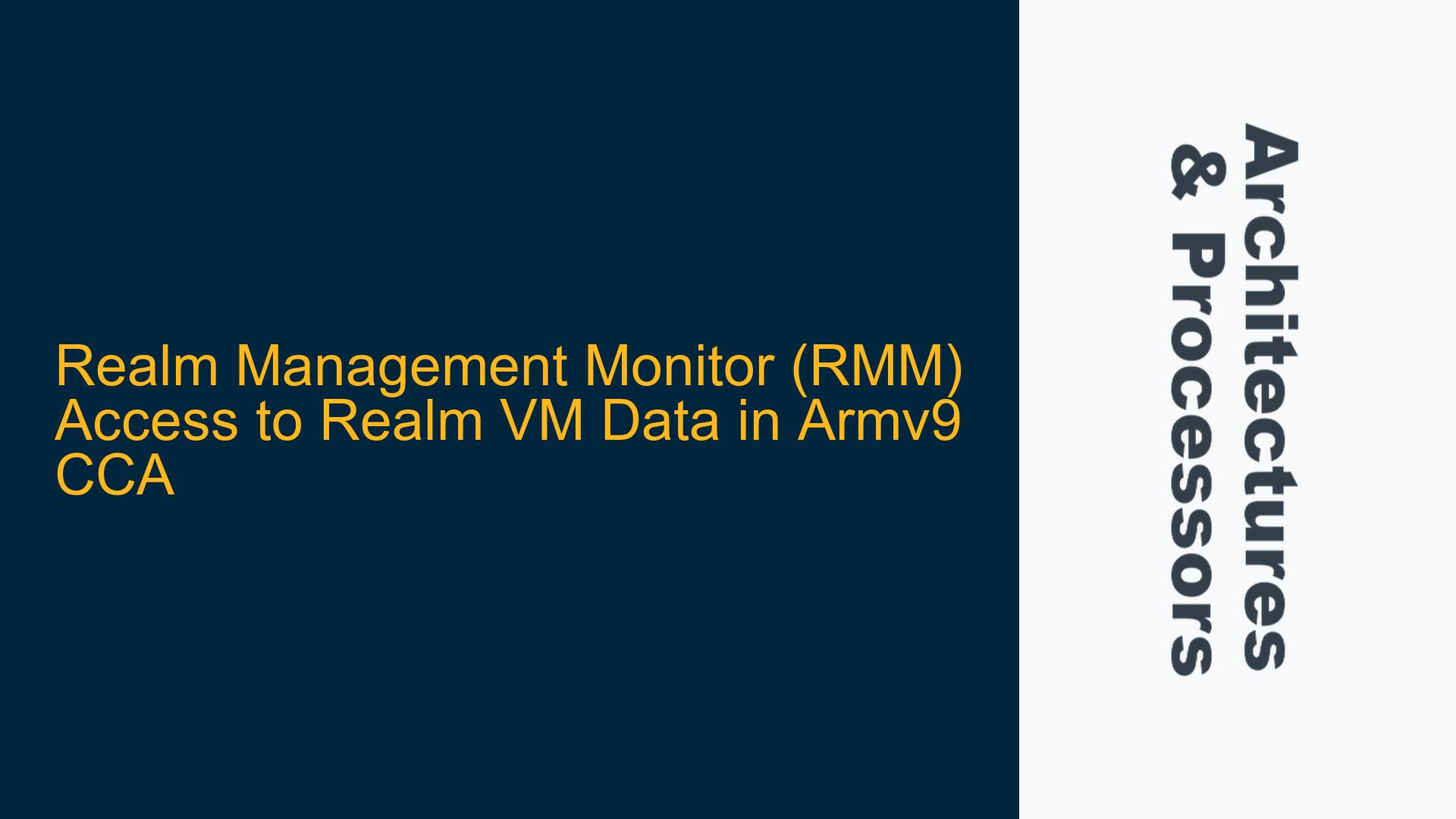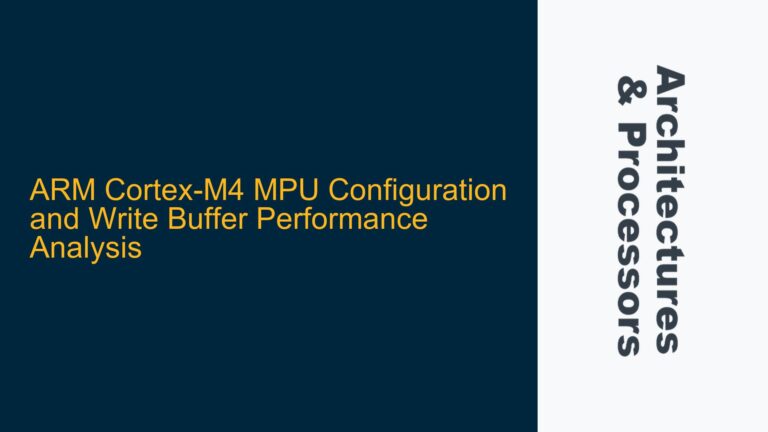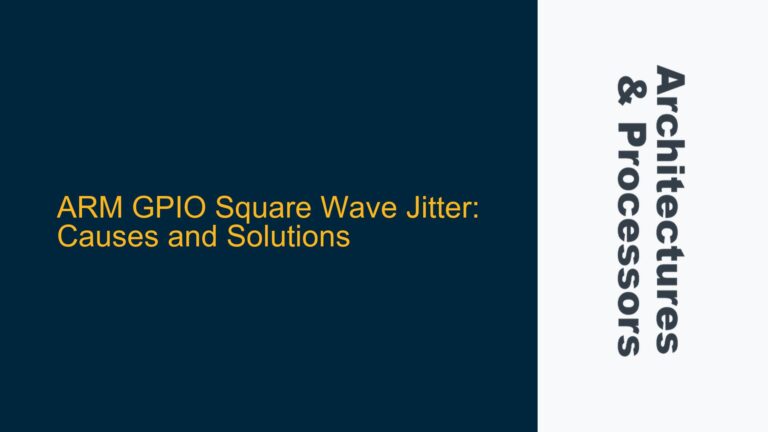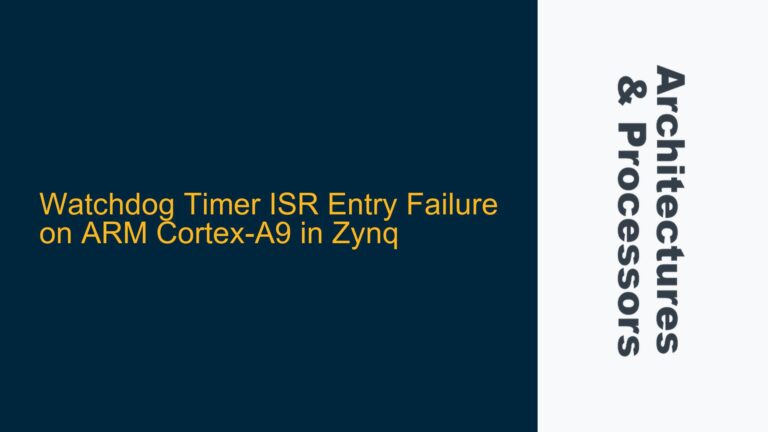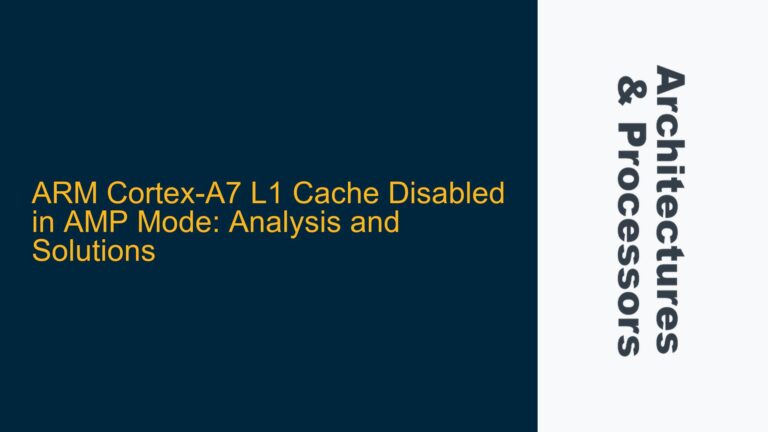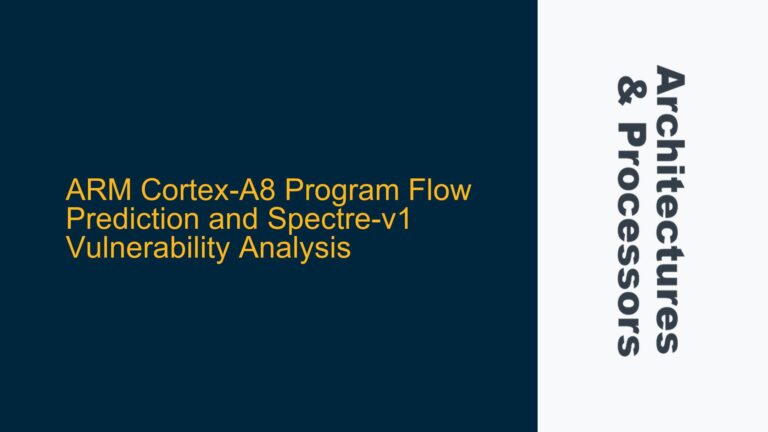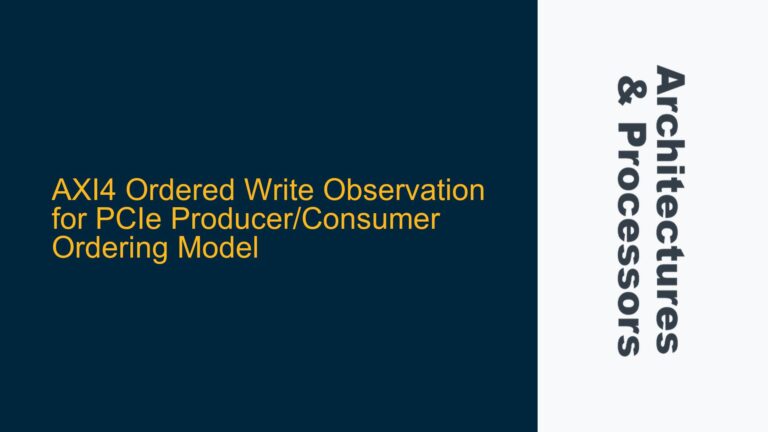Realm Management Monitor (RMM) Capabilities and Realm VM Data Access
The Realm Management Monitor (RMM) in Armv9’s Confidential Compute Architecture (CCA) is a critical component responsible for managing Realm Virtual Machines (VMs). A Realm VM is a secure execution environment designed to provide strong isolation guarantees, ensuring that sensitive data and computations are protected from unauthorized access, even from higher-privileged software layers. The RMM operates at the R-EL2 exception level, which is specifically designed for managing Realm VMs. One of the key questions that arise in this context is whether the RMM can access the data within a Realm VM, specifically whether it can read or write to the Realm VM’s memory.
The Realm VM’s memory is protected by the Realm Physical Address Space (PAS), which is a secure memory space that is isolated from the Non-Secure and Secure worlds. The RMM interacts with the Realm VM through defined interfaces, primarily the Realm Services Interface (RSI) and power management interfaces. The RSI provides a set of commands that the RMM can use to manage the Realm VM, including memory allocation, deallocation, and configuration. However, the extent to which the RMM can access the Realm VM’s data, particularly for reading and writing operations, is a nuanced topic that requires a detailed exploration of the architectural capabilities and constraints.
Architectural Capabilities of RMM at R-EL2 and Realm PAS Memory Access
The RMM, operating at R-EL2, has the architectural capability to access the Realm PAS memory. This capability is essential for the RMM to perform its management functions, such as allocating and deallocating memory for the Realm VM. The RMM uses specific commands, such as RMI_DATA_CREATE and RMI_DATA_DESTROY, to manage the memory within the Realm PAS. These commands allow the RMM to create and destroy memory regions within the Realm PAS, which are then used by the Realm VM for its operations.
In addition to memory management, the RMM also writes to the Realm PAS memory during the execution of certain RSI commands. For example, the RSI_ATTESTATION_TOKEN_* commands involve the RMM writing attestation data to the Realm PAS memory. Similarly, the RSI_HOST_CALL and RSI_REALM_CONFIG commands also require the RMM to write to the Realm PAS memory. These operations are necessary for the RMM to configure the Realm VM and facilitate communication between the Realm VM and the host environment.
However, the ability of the RMM to read from the Realm PAS memory is a more complex issue. While the RMM can write to the Realm PAS memory, the architectural specifications do not explicitly grant the RMM the capability to read from the Realm PAS memory. This distinction is crucial because it affects the security guarantees provided by the CCA. If the RMM were able to read the Realm VM’s data, it could potentially compromise the confidentiality of the data within the Realm VM. Therefore, the architectural design of the RMM and the Realm PAS memory access mechanisms must be carefully analyzed to determine whether the RMM can read the Realm VM’s data.
Implementing Secure Memory Access Controls in RMM and Realm VM Interactions
To ensure the security and integrity of the Realm VM’s data, the RMM must implement strict memory access controls. These controls should be designed to prevent unauthorized access to the Realm PAS memory, particularly read access by the RMM. The RMM should only be able to write to the Realm PAS memory when necessary for its management functions, and these writes should be carefully controlled to prevent any unintended data exposure.
One approach to implementing these controls is to use hardware-based memory protection mechanisms. The Armv9 architecture provides several features that can be leveraged to enforce memory access controls, such as memory protection units (MPUs) and address translation mechanisms. These features can be used to create secure memory regions within the Realm PAS that are only accessible to the RMM for specific operations. For example, the RMM could be granted write access to certain memory regions for memory allocation and deallocation, but read access could be restricted to prevent data leakage.
Another approach is to use software-based access controls within the RMM. The RMM could implement a set of policies that define which memory regions it can access and under what conditions. These policies could be enforced through runtime checks that verify the RMM’s access requests against the defined policies. If an access request violates the policies, the RMM could be prevented from accessing the memory region, and an error could be logged for further analysis.
In addition to access controls, the RMM should also implement mechanisms to ensure the integrity of the data within the Realm PAS memory. This could include using cryptographic techniques to verify the authenticity of the data written by the RMM and to detect any unauthorized modifications. For example, the RMM could use digital signatures to sign the data it writes to the Realm PAS memory, and the Realm VM could verify these signatures before using the data. This would ensure that the data has not been tampered with and that it originated from a trusted source.
Furthermore, the RMM should implement mechanisms to prevent data leakage through side channels. Side channel attacks exploit indirect information leakage, such as timing variations or power consumption patterns, to infer sensitive information. To mitigate these attacks, the RMM should use constant-time algorithms for its operations and should avoid any operations that could introduce timing variations. Additionally, the RMM should use secure memory access patterns that minimize the risk of data leakage through power analysis or other side channels.
Finally, the RMM should provide mechanisms for auditing and monitoring its memory access operations. This could include logging all memory access requests and their outcomes, as well as providing tools for analyzing these logs to detect any suspicious activity. The logs could be used to identify potential security breaches and to investigate any incidents that occur. Additionally, the RMM could provide real-time monitoring capabilities that alert administrators to any unusual memory access patterns or potential security threats.
In conclusion, the RMM’s access to the Realm VM’s data is a critical aspect of the Armv9 CCA architecture. While the RMM has the capability to write to the Realm PAS memory for management functions, its ability to read from the Realm PAS memory is more restricted. To ensure the security and integrity of the Realm VM’s data, the RMM must implement strict memory access controls, use hardware and software-based protection mechanisms, and provide mechanisms for auditing and monitoring its memory access operations. By carefully designing and implementing these controls, the RMM can provide strong security guarantees for the Realm VM’s data, ensuring that it remains protected from unauthorized access and tampering.
